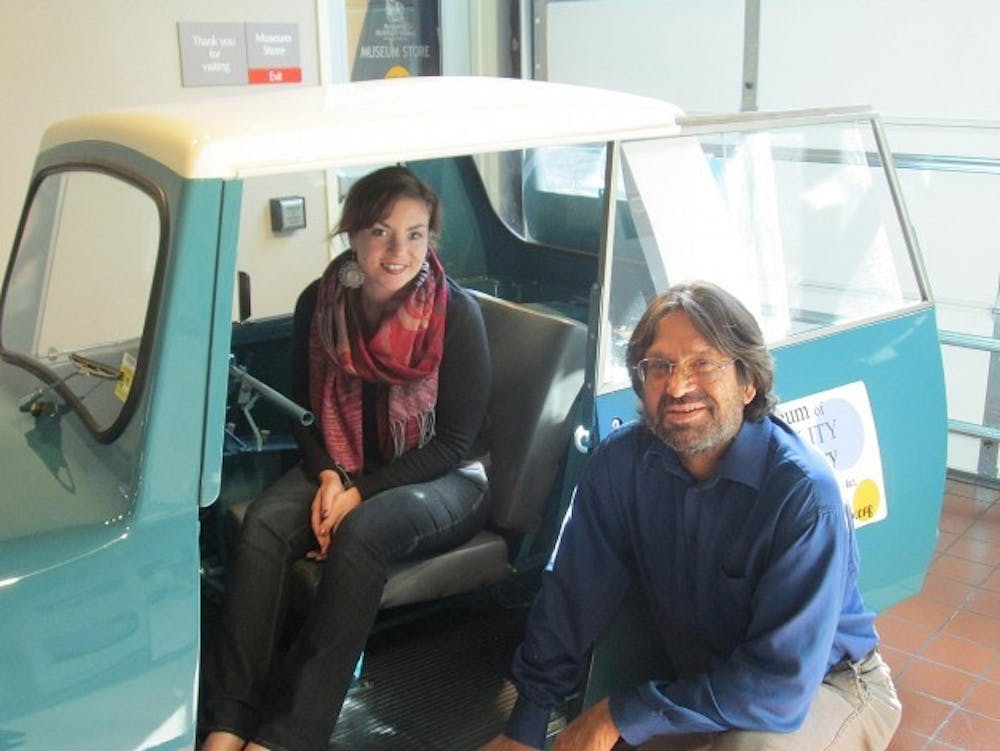Crutches, wheelchairs and leg braces line the inside of a brick building. However, this building has no patients, and it doesn't exist to physically heal.
It exists to educate.
The Museum of disABILITY History, located at 3826 Main St., is the first of its kind - not just in America, but worldwide. The museum is dedicated to helping the public understand and accept people with disabilities, and it offers permanent, traveling and virtual exhibitsthe public can interact with.
Currently, the most eye-catching exhibit is a stand alone, sky blue, three-wheeled Invacarstationed in one corner of the museum. The original Invacar was designed by Oscar Bertram Greeves in Britain after World War II to help disabled veterans and others who were not able to drive.
The hand control is made of a complex combination of handles, knobs and various other devices fitted into a sleek-looking tiller, which works as the steering wheel, accelerator, clutch and brake.
The Invacar at the museum has won multiple awards from the British Car Club of Western New York at EuroCar Day for four consecutive years since 2008.
The museum also ventures daringly into other areas like cultures' treatment of disability.
The museum's efforts in creating an inviting and distinctive space have paid off, which shows through the variety of their visitors.
"We do attract people from all over, including outside the United States," said museum curator David Platt. "Disability is a human condition that transcends borders; it transcends ethnicity, gender, socioeconomic status."
Matt Edmonds, 28, is one such diverse visitor. Edmondscame all the way from London, England to use the museum's rich resources for work-related research.
"I thought [the museum would] be centered around institutions, but not maybe go into stuff like entertainment," Edmonds said. "I didn't expect so many showpieces. I expected kind of more text and less, you know, interesting artifacts, so that's been cool to see."
The museum has an intertwining history with UB. James M. Boles, president and CEO of People Inc., founded the museum afterhaving taught a class on introduction to developmental disabilities at UB. Several picture artifacts of UB South Campus buildings are on display, too, except their names are recorded differently.
For example, the Erie County Alms House is among the buildings recorded, and students today may know it as Hayes Hall. The black-and-white nursing headquarters and maternity hospital is now Wende Hall, home to UB's School of Nursing.
The museum also supports the disabled community by selling arts and crafts. Dishtowel angels, wine glasses and braille jewelry are all for sale - all hand-made by the disabled. Part of the money earned then goes back to fund rehabilitation programs conducted by People Inc.
The wine glasses are a personal favorite of museum receptionist Pamela Formoso, a junior management major.
"Every time, you can never get the same wine glass from them," Formoso said. "Pretty much for all the people-made items, you will never get the same thing, so they're all very unique."
So far, parent company People Inc. funds the museum, and other organizations - such as the National Endowment for the Humanities and the B. Thomas Golisano Foundation - provide grants. However, the museum wants to be more independent.
"Our goal is to be more self-sustaining so that we can stand on our own," Platt said. "People Inc. is a very generous parent organization, and the goal of every parent is to see their project grow up and become mature."
Inthe meantime, Buffalo's own Museum of disABILITY History will continue to explore emerging disability issues.
The Museum of disABILITY History is open Tuesday to Friday from 10 a.m. to 4 p.m., and Saturday from 10 a.m. to 2 p.m.
Email: arts@ubspectrum.com





